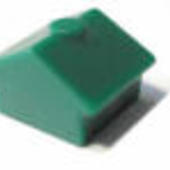A couple of days ago Spencer Rascoff with Zillow wrote a postabout why the Case-Shiller home price index along with NAR's index were both inaccurate representations of the market.
The point of Mr. Rascoff's post was, "Bottom line: methodological flaws in the median sale price and the Case-Shiller Index make them appear overly negative, which is bad for all of us".
There are two points of difference that I have with Mr. Rascoff's analysis of these indices; the first is the methodology, and the second is the philosophy.
First, in terms of methodology, the NAR and the Case-Shiller use differentdata sets to determine the percentage change in home values for local real estate markets. The NAR uses the median home value analysis whereby they remove the top half and lower half of the aggregate home sales and that leaves them with the "middle" number, the median.
The Case-Shiller index uses a different type of methodology, they use the "repeat sales method" approach. What this allows them to do is to measure the change in sales price for the exact same home over a period of time, this way they are making an apples to apples comparison.
The point I want to make is that these two price indices use different and distinct methodologies. Like them or hate them, the truth is probably somewhere in between them.
We can't have it both ways. I didn't hear the uproar about these methodologies when the market was in a boom, but now that the market has turned, these price indices apparently have more holes in them than Roger Clemens' testimony before Congress.
The prevailing train of thought by Mr. Rascoff was that both of these methods account for foreclosure activity and as a result, this foreclosure activity drives both the median and the repeat sales method analysis prices lower than they should be making, " them appear overly negative".
The philosophical difference I have with Mr. Rascoff's point about price changes appearing overly negative is that it is in direct conflict with the need for seller's to be more realistic about pricing their home when they list. To use Al Gore's saying, "the inconvenient truth" about selling in today's real estate market is that sellers are indeed competing against foreclosures. And while some markets may have a higher concentration of foreclosures than others, it can not be ignored when pricing a home.
To ignore the foreclosure element of the marketplace is a lot like Congress' decision to ease off of the "mark to market" accounting practice. It may make banks and home sellers sleep better at night thinking their assets or their home is actually worth more than it is, but once those assets or that home is put up for sale and brought to the market, they will ultimately have to recognize that those assets or their home is not worth what they thought it was.
Foreclosures are a significant part of our real estate market, they are going to be for several years to come. The sooner that homeowners can recognize this the sooner they will be able to price their home to the market and get it sold. The market price is what the market will bear for the home.


Comments(1)